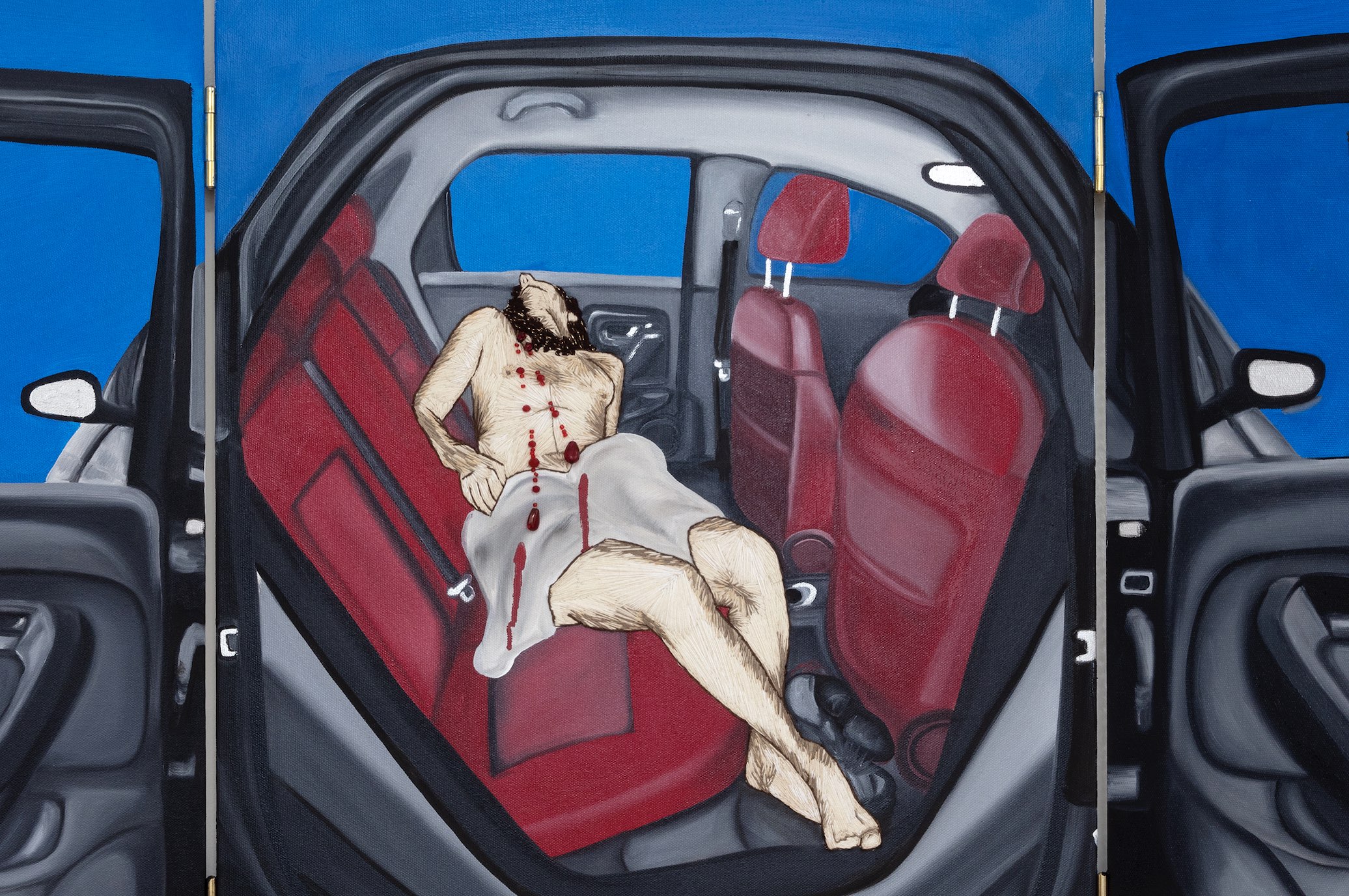
Review
'Uber: Let me in'. Frieda Toranzo Jaeger at Travesía Cuatro
by Julián Madero Islas
Reading time
4 min
Frieda Toranzo Jaeger (1988, Mexico City) presents her second solo exhibit in Mexico, at the Travesía Cuatro gallery. Composed of six pieces, she explores various methodological strategies developed in recent years: the foldable triptych, the integration of embroidery into painting, and the car motif serve as a facade for a complex game of conceptual operations.
Painting, according to Toranzo, is her preferred medium because it "has the greatest epistemological potential in the construction of subjectivity within history."¹ It works especially well for a vandalistic critique of conventional symbols, such as those associated with money, power, and masculinity. Toranzo designates the inside of the automobile as a "psychological space where we all find ourselves" and the car itself as a symbol of "neo-capitalist heteropatriarchy" in her critique.
In principle, we are met with a new formulation of the painting-window paradigm, transfigured into painting-windshield; the foldable triptych format that opens and closes amplifies the sensation of being inside a vehicle. Anyone who has ever waited for an Uber outside a crowded event can relate to the title of the exhibition: tired legs, the multitude, the annoyance that ceases once seated in the car seat. It's the superlative of the cinematic shout for a Taxi! where the phrase “just take me home” promised a return to reason after the nightmare. What seems to disturb the comfort fantasy in Toranzo Jaeger's pieces is that the outside world is eclipsed, on fire, or suspended in a void. “The future is empty,” she adds.
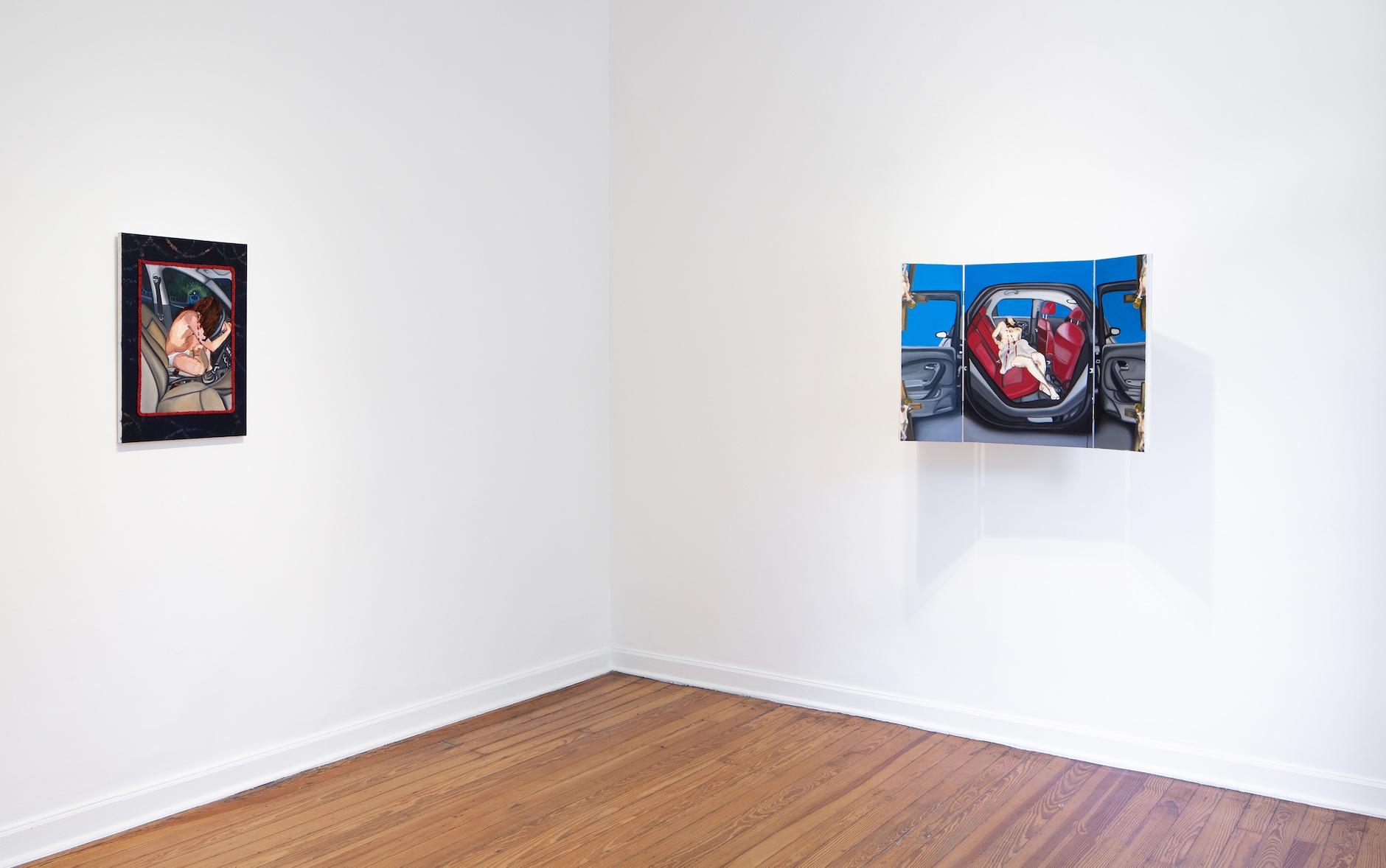
If the car represents the psychological space of capitalism, what can a martyred person in his underwear clutching the steering wheel symbolize, or the 'dead' partier Jesus in the backseat? The paintings display a pathetic identification between the martyr's body and contemporary sentiment. "What doesn’t lead to drama and stress nowadays? Aging, gaining weight, becoming unattractive, sleeping, raising children, going on vacation, everything becomes a problem; basic activities have become impossible."² Indeed, as pinpointed by Lipovetsky, “the narcissistic individual is, nevertheless, prone to anxiety and anguish.”³
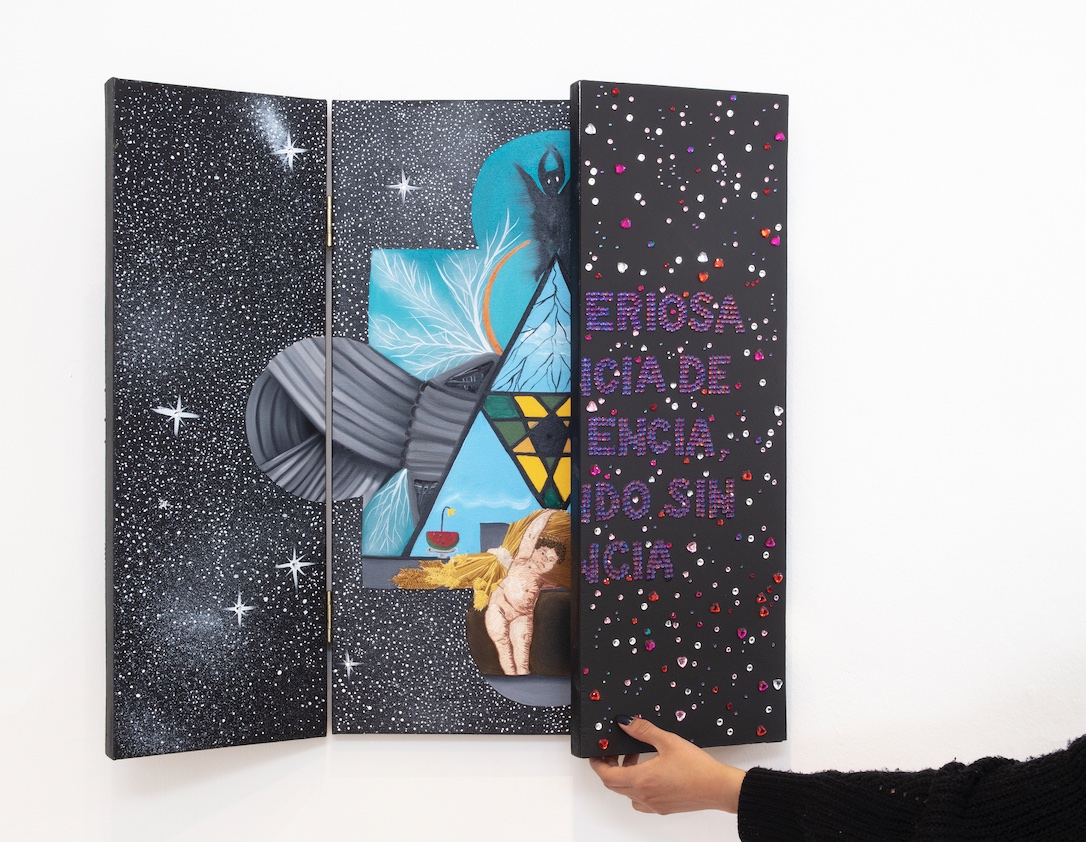
We remain vulnerable and naked inside the womb-like cabin. It’s the epitome of the car: it drives itself. Auto-fem. Upon closing its doors, the cabin becomes a coffin. We seem condemned to stay inside the vehicle while the outside burns. In this descent from the nightmare there aren't mourners or executioners: the parasite is spectral. The triptych that welcomes us reads: The mysterious presence of absence, a world without agency. Frieda subverts the masculine fantasy of control over the car for an embryonic state, fostered by a female AI.
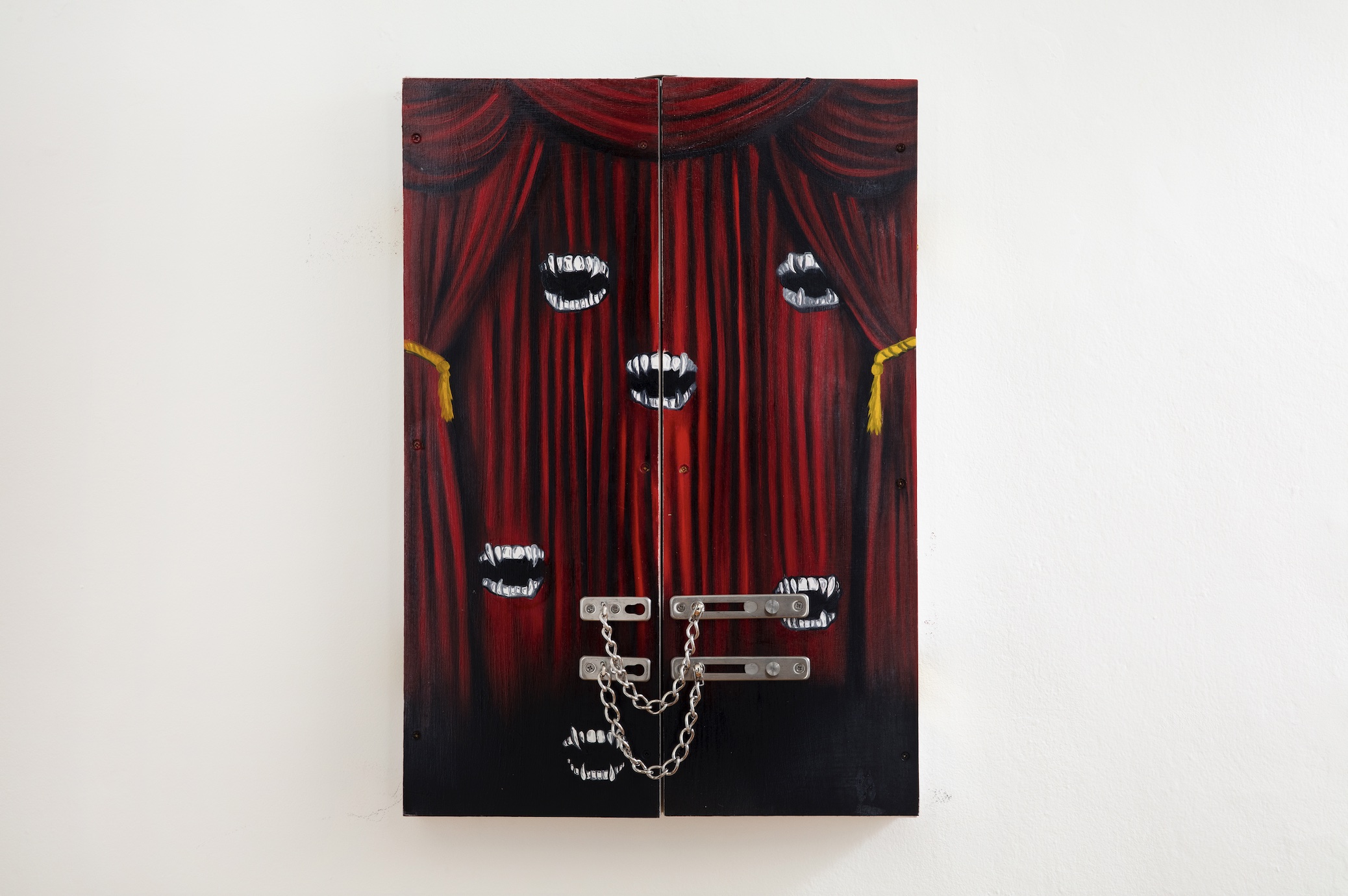
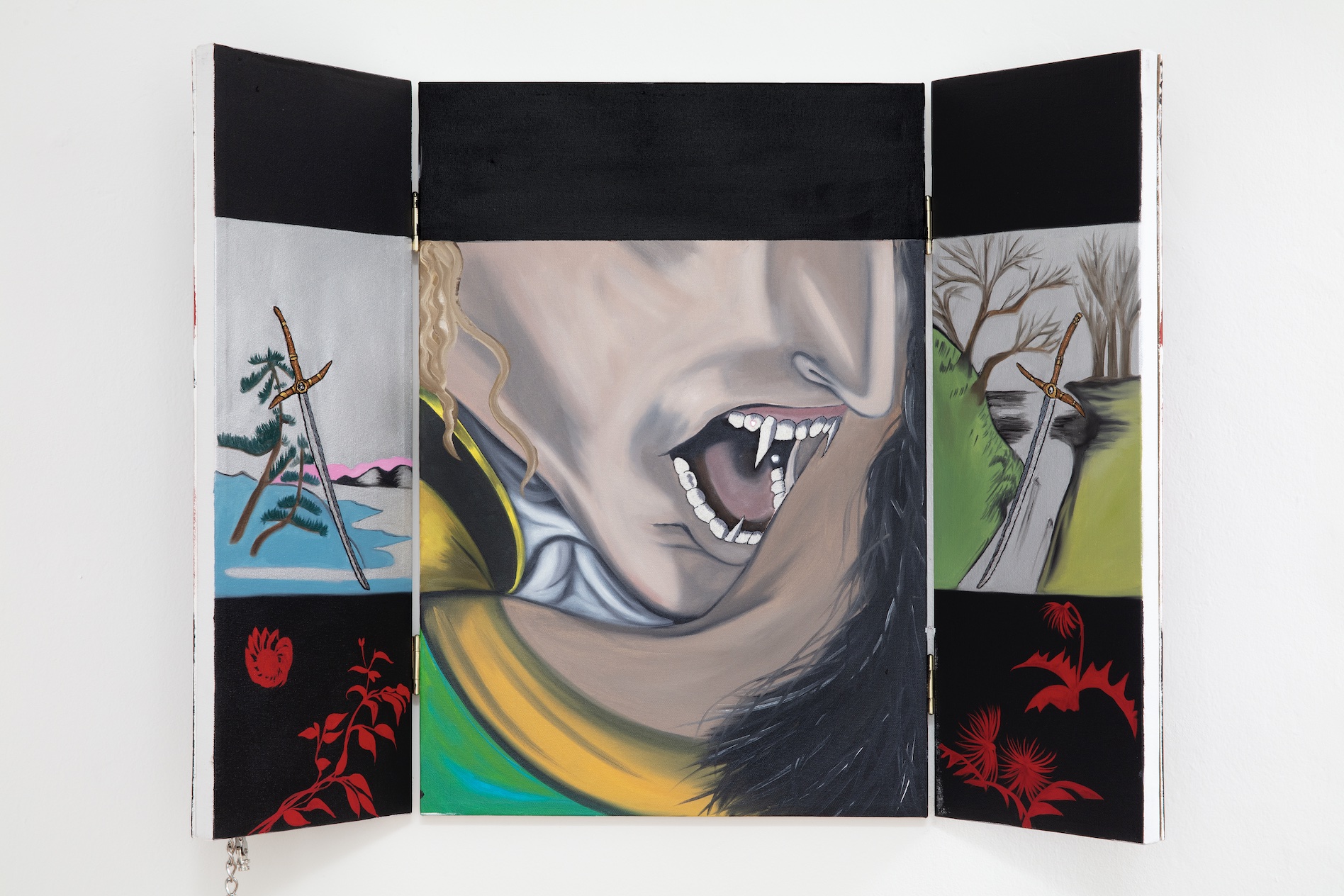
Another triptych, Am moving down to Mexico, with its doors shut, displays a vampiric theater curtain. The bolts open. On the sides, swords penetrate a lake, a cliff; in the center, a fang bite on a neck. The swords, like the fangs, have been meticulously embroidered; the bodies, the flowers, the braid that frames the picture, generate affection. Uber: urbe, ubre [Uber: city, udder.]⁴ Apparently, something has been salvaged from the loss of agency within this esoteric capitalist, in this fantasy, the utopian horizon lies in outer space.
Translated to English by Luis Sokol
1: This and subsequent references to Toranzo's ideas, which I paraphrase here, can be found in the talk she gave as part of the program "Miércoles de SOMA" in October of last year. https://www.youtube.com/watch?v=yba6Z1BTkx8&ab_channel=Mi%C3%A9rcolesDeSOMA
2: Gilles Lipovetsky, La era del vacío. Ensayos sobre el individualismo contemporáneo. 13° ed. (Barcelona: Anagrama, 2000), 47.
3: Ibid.
4: Here the author is playing with the resemblance of these three words. The wordplay doesn’t work in English, so both the original and the translation are presented in the article.
Published on March 6 2024